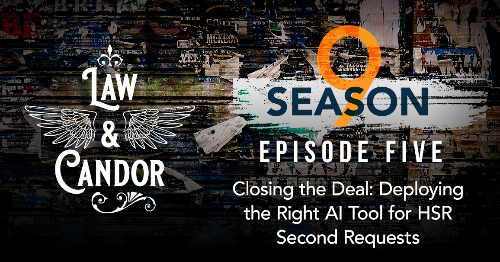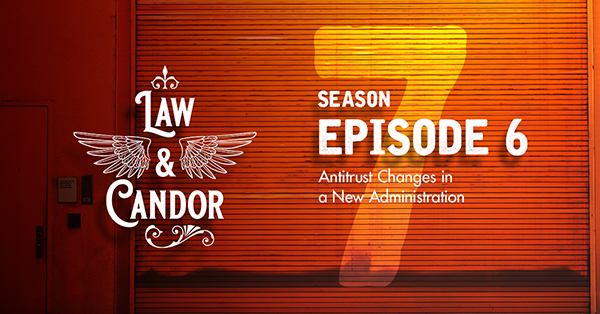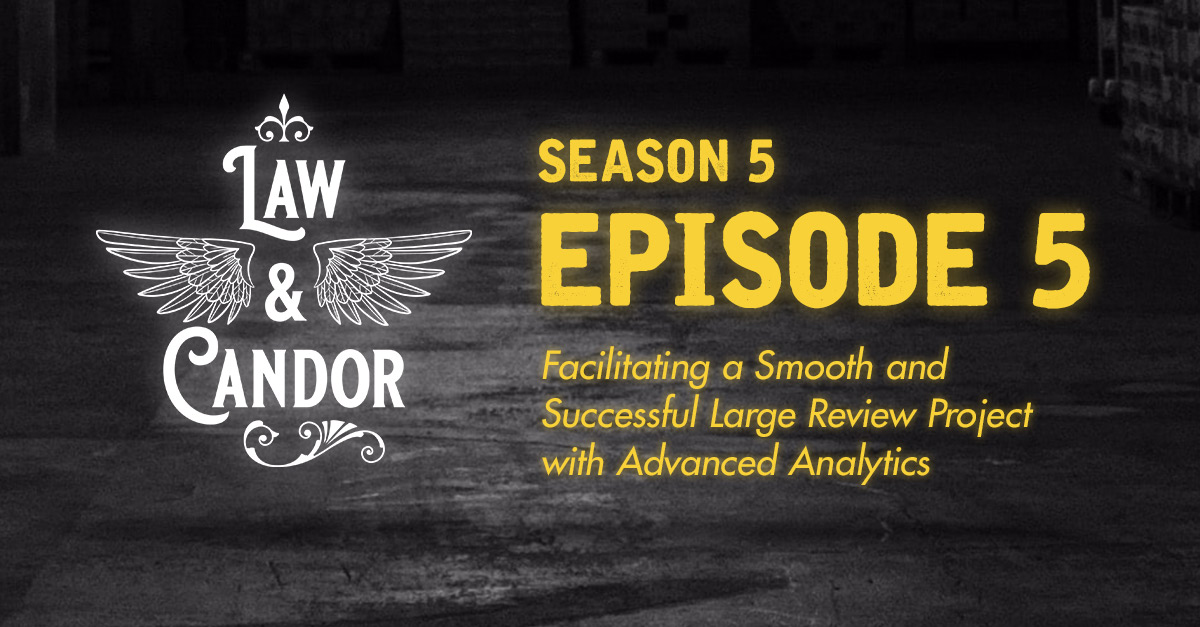Global Law Firm Partners with Lighthouse to Save Millions During Government Investigation
Lighthouse partners with a global law firm to meet a 60-day production deadline for an 11.5 million-document population, saving the firm millions. What They Needed A global law firm was representing a large analytics company being investigated by the Federal Trade Commission (FTC) for antitrust activity. The company faced an extremely aggressive production deadline—approximately 60 days to collect, review, and produce responsive documents from an initial data population of roughly 11.5M. How We Did It The firm partnered with Lighthouse to create a workflow to execute multiple work streams simultaneously (collections, processing, TAR, privilege review, and logging) to ensure the company could meet the production deadline. Lighthouse expert teams managed the entire process, implementing daily standup calls and facilitating communication between all stakeholders to ensure that each workflow was executed correctly and on time. Lighthouse clients that leverage our AI technology to its full potential can realize even more cost savings and efficiency. For example, in this case, this global law firm would have seen the removal of close to 420K documents from privilege review that our AI accurately (as verified in the qc process) deemed to be highly unlikely or unlikely to be privilege. The Lighthouse team also provided strategic and defensible review methods to attack data volume and increase overall efficiency throughout the project. This included Technology Assisted Review (TAR) and email thread suppression in combination with our proprietary AI-technology and privilege log application. The different work streams that Lighthouse designed and executed to reduce the time, burden, and expense of review included: Lighthouse Forensic Collection : Lighthouse’s dedicated expert forensic team implemented a workflow to perform all initial collections, as well as all refresh collections across M365 mailboxes, Teams data, OneDrive, and SharePoint. TAR 1.0 : Lighthouse implemented predictive coding via a TAR 1.0 workflow to systematically find and remove non-relevant documents in a defensible manner. Not relevant documents that fell below the cutoff score were removed from the review population to reduce privilege review. Non-TAR Review : A detailed file analysis was conducted on documents that could not be scored via the TAR model by Lighthouse experts to remove non-responsive documents from eyes-on responsiveness review. Email Threading : Once TAR 1.0 reached stability and a cutoff score was achieved, Lighthouse applied email thread suppression on the documents above the cutoff score to further decrease privilege review and the production set overall. Managing Teams data : The Lighthouse team leveraged our proprietary chat tool to deduplicate Microsoft Teams data. Using the tool, the team stitched Teams messages back together in a format that allowed outside counsel to easily see the conversation in totality (e.g., who was part of the thread, who entered/left the chat room, who said what, at what time, etc.). The tool then integrated and threaded chat messages with search and filtering capabilities for review directly in Relativity. Privilege Review : Even as collections, TAR 1.0, email threading, and document review workflows were ongoing, the Lighthouse advanced analytics team leveraged technology in combination with their expertise to drastically reduce the privilege review set and guard against inadvertent production of privileged documents: Lighthouse Strategic Privilege Reduction : Lighthouse data reduction experts worked with outside counsel to analyze the data to identify large categories of documents that could be safely removed from privilege review, such as two large tranches of calendar items that were pulled into the privilege review. Lighthouse also ran a separate header-only privilege screen across and located a pattern in the privilege hits, which outside counsel confirmed were not privileged and removed from privilege review. AI-enabled Privilege QC : To minimize risk and increase efficiency of privilege review, Lighthouse deployed our advanced AI-technology, which uses multiple algorithms to analyze the text and metadata of documents, enabling highly accurate privilege predictions. First, it analyzed the entire review workspace and identified additional privileged documents that were not picked up by the conventional privileged screen approach. Then, the tool was utilized in privilege review QC workflows where it helped reviewers overturn first and second level privilege calls. Privilege logging application : Lighthouse also leveraged our privilege logging application to automate privilege log generation, saving outside counsel significant time and driving consistent work product in creating their privilege log. The Results Lighthouse forensic collection collected roughly 11.5M documents from more than 600 unique datasets and over 90 custodians, spanning M365 mailboxes, Teams data, OneDrive, and SharePoint sources. Lighthouse’s TAR 1.0 workflow then dramatically reduced the document population for privilege review, ultimately removing over 6M documents in full families from review, thereby delivering a savings of nearly $6.2M. The Lighthouse team’s detailed file analysis of non-TAR universe resulted in an additional 640K files removed from responsiveness review—encompassing close to a 90% reduction in the non-TAR review volume and delivering a savings of roughly $640K. Our email thread suppression process then removed another 1.1M documents from review (for a savings of $1.1M), while the Lighthouse proprietary chat tool removed over 63K Teams items and generated over 200K coherent transcript families from 1.3M individual messages. Law Firm Case Studycase-study; antitrust; ediscovery; tar; tar-predictive-coding; law-firm; hsr-second-requests; investigations; mergers; ai-and-analytics; ai-big-data; artificial-intelligence; ai; acquisitions; analytics; predictive-coding; prism; privilege; privilege-review; name-normalization; microsoft; emerging-data-sources; forensics; collectionsediscovery-review; ai-and-analytics; antitrust; chat-and-collaboration-data; client-successCase-Study, client-success, Antitrust, eDiscovery, TAR, TAR-Predictive-Coding, Law-Firm, HSR-Second-Requests, investigations, Mergers, ai-and-analytics, AI-Big-Data, artificial-intelligence, AI, Acquisitions, analytics, predictive-coding, Prism, privilege, privilege-review, name-normalization, microsoft, Emerging-Data-Sources, digital forensics, collections, ediscovery-review, ai-and-analytics, antitrust, chat-and-collaboration-data


























